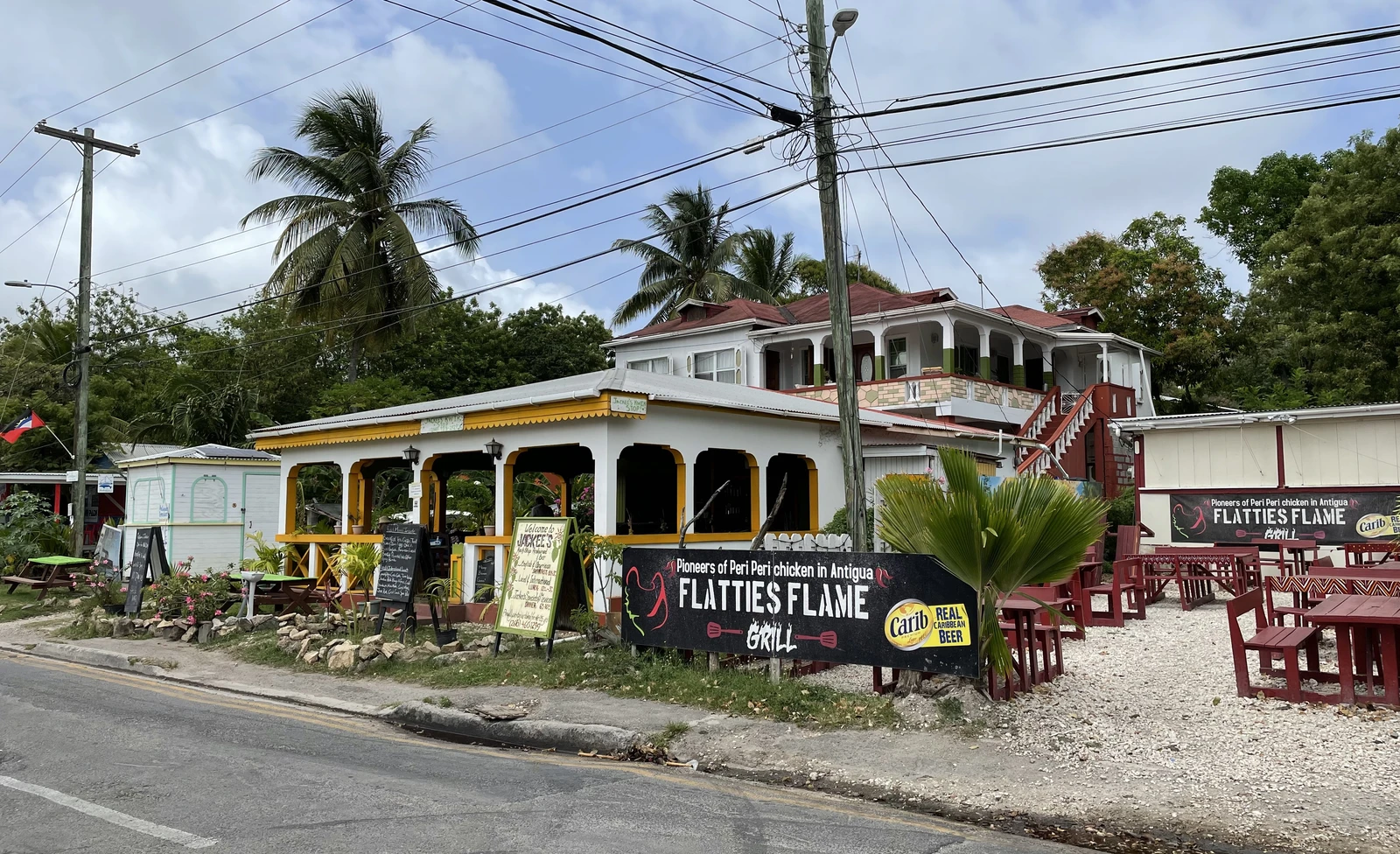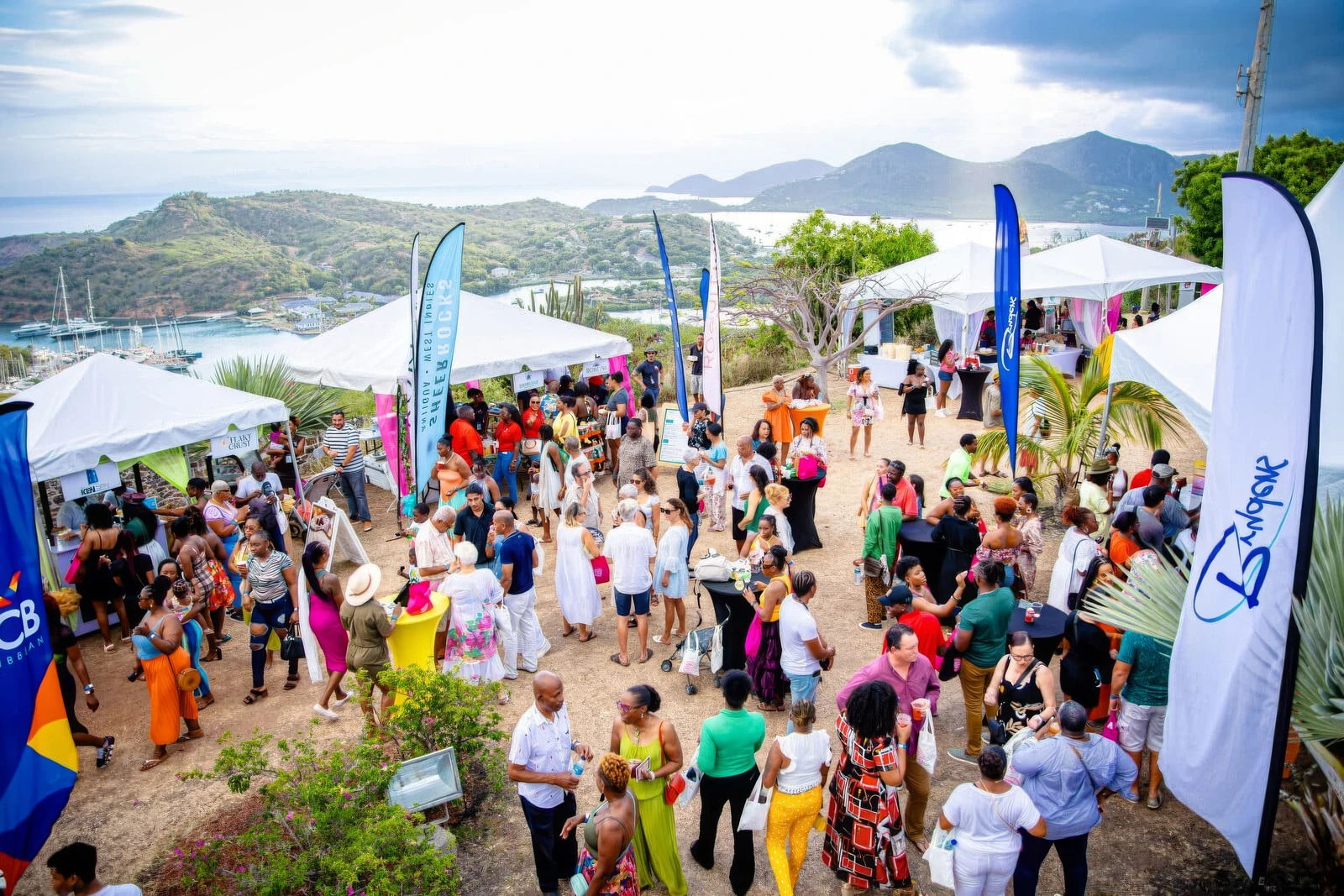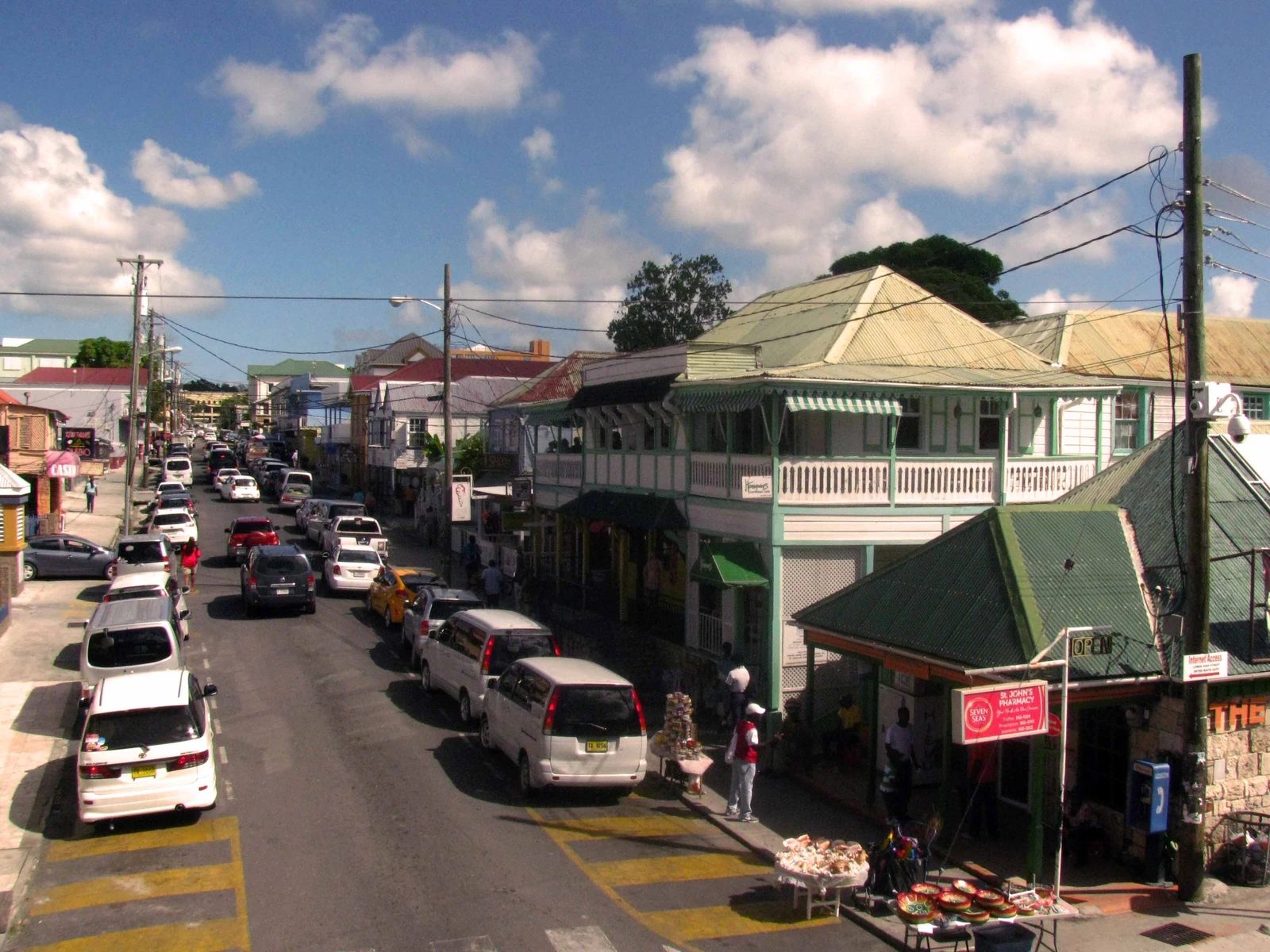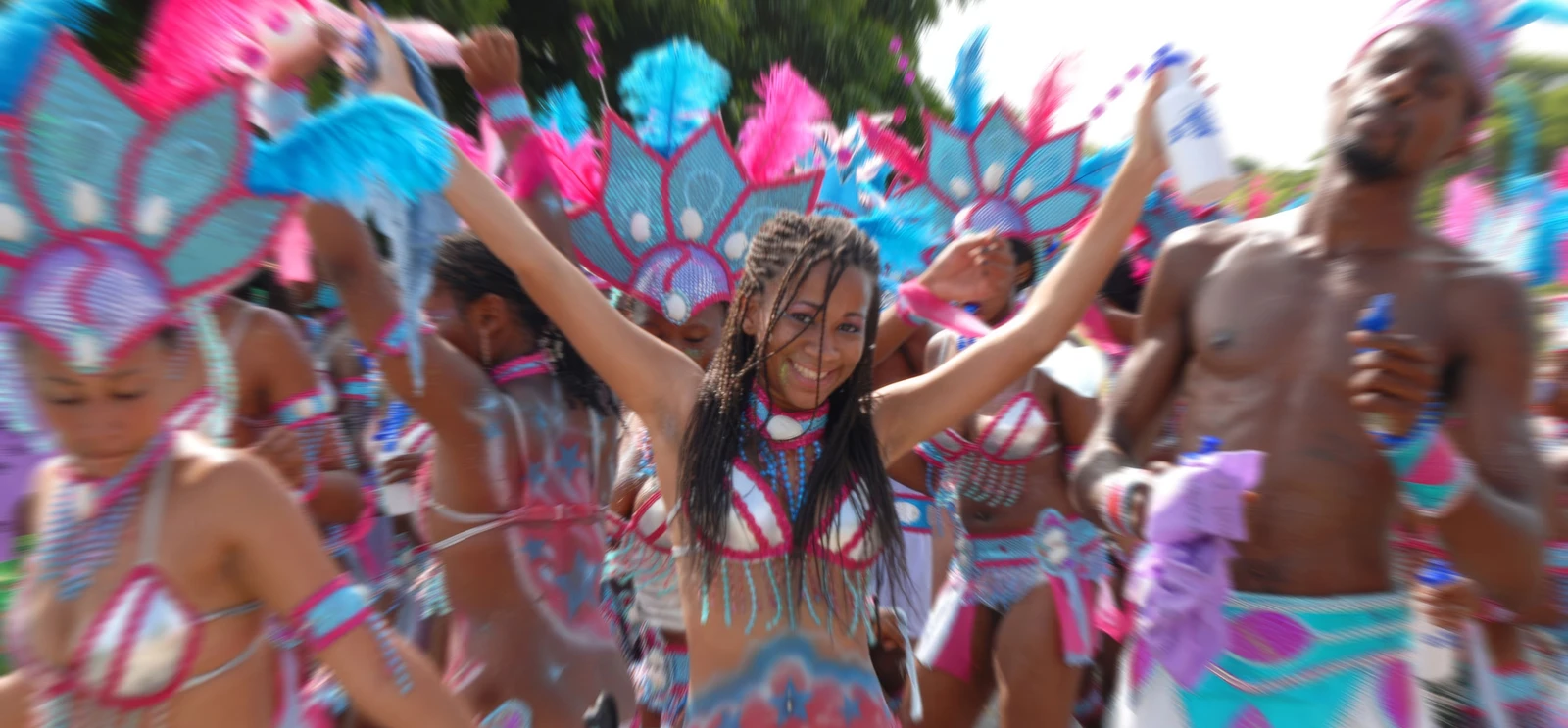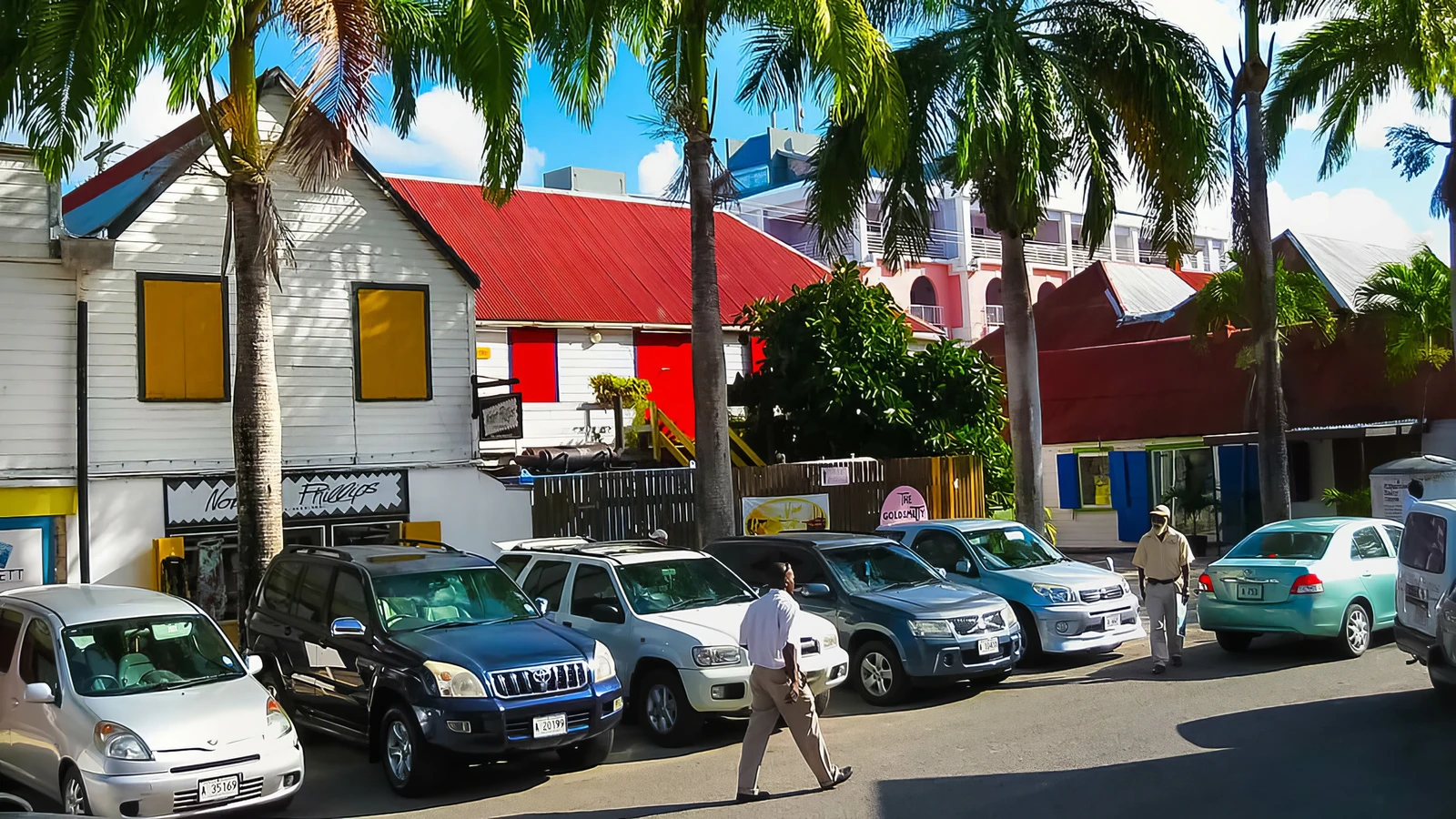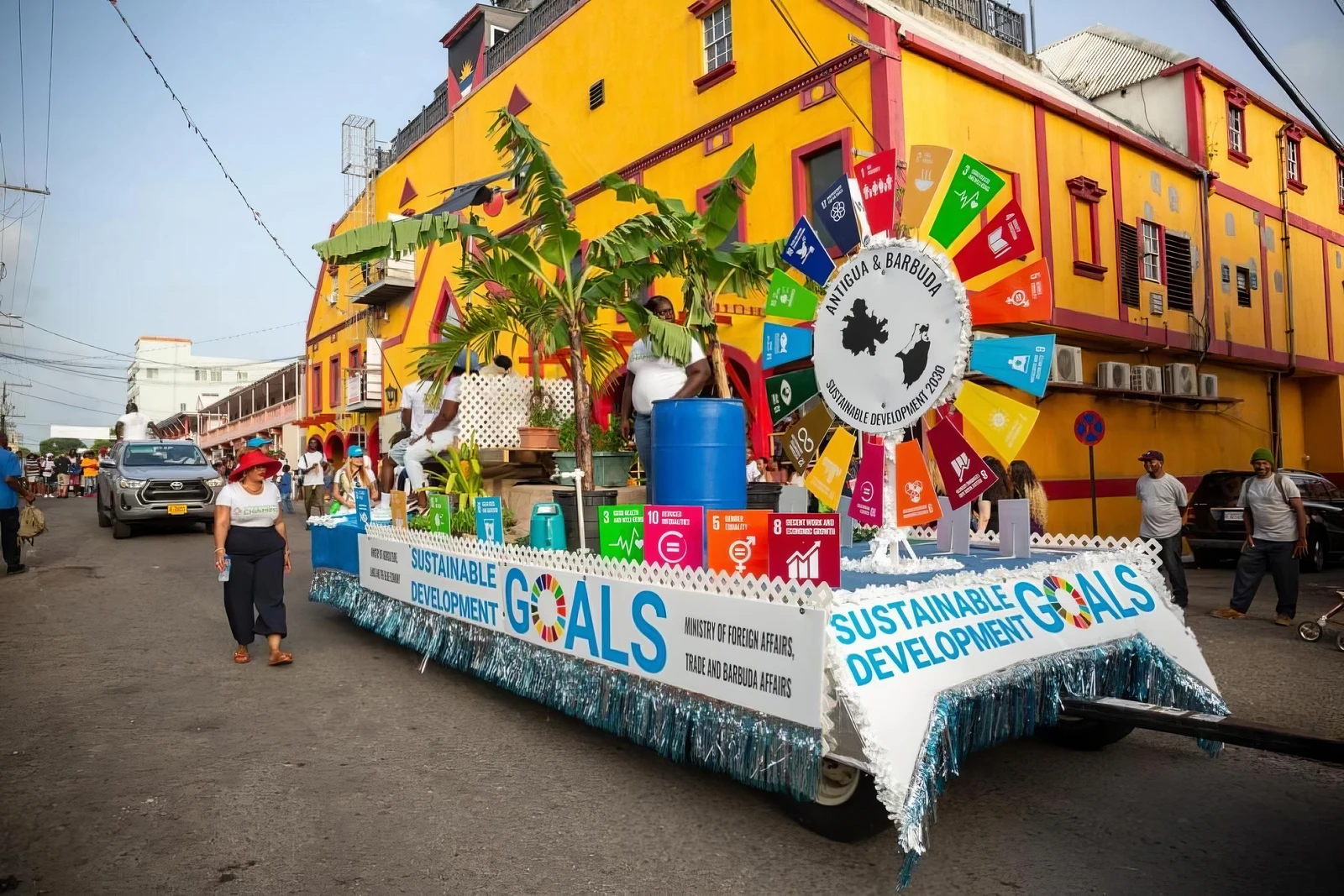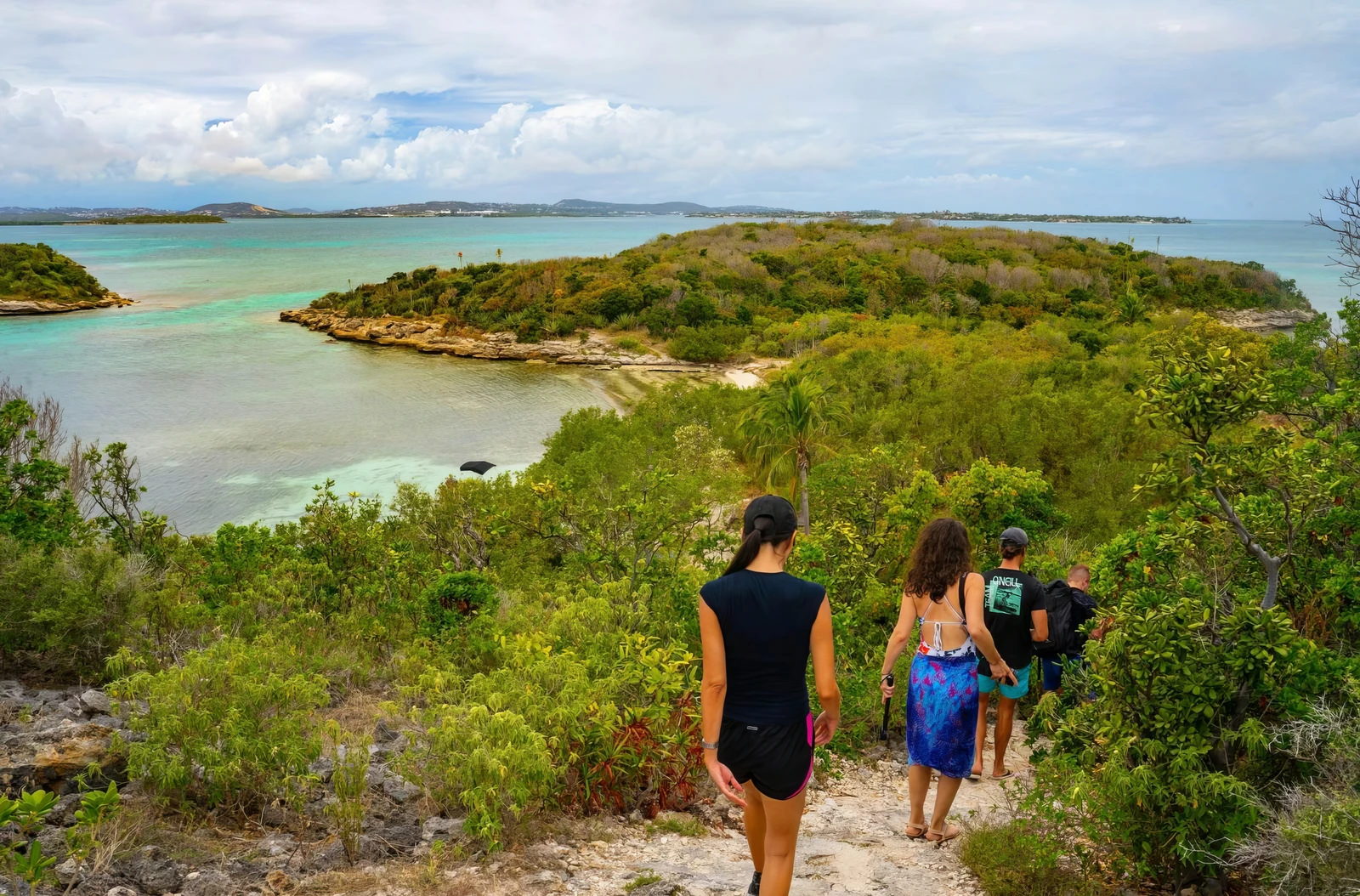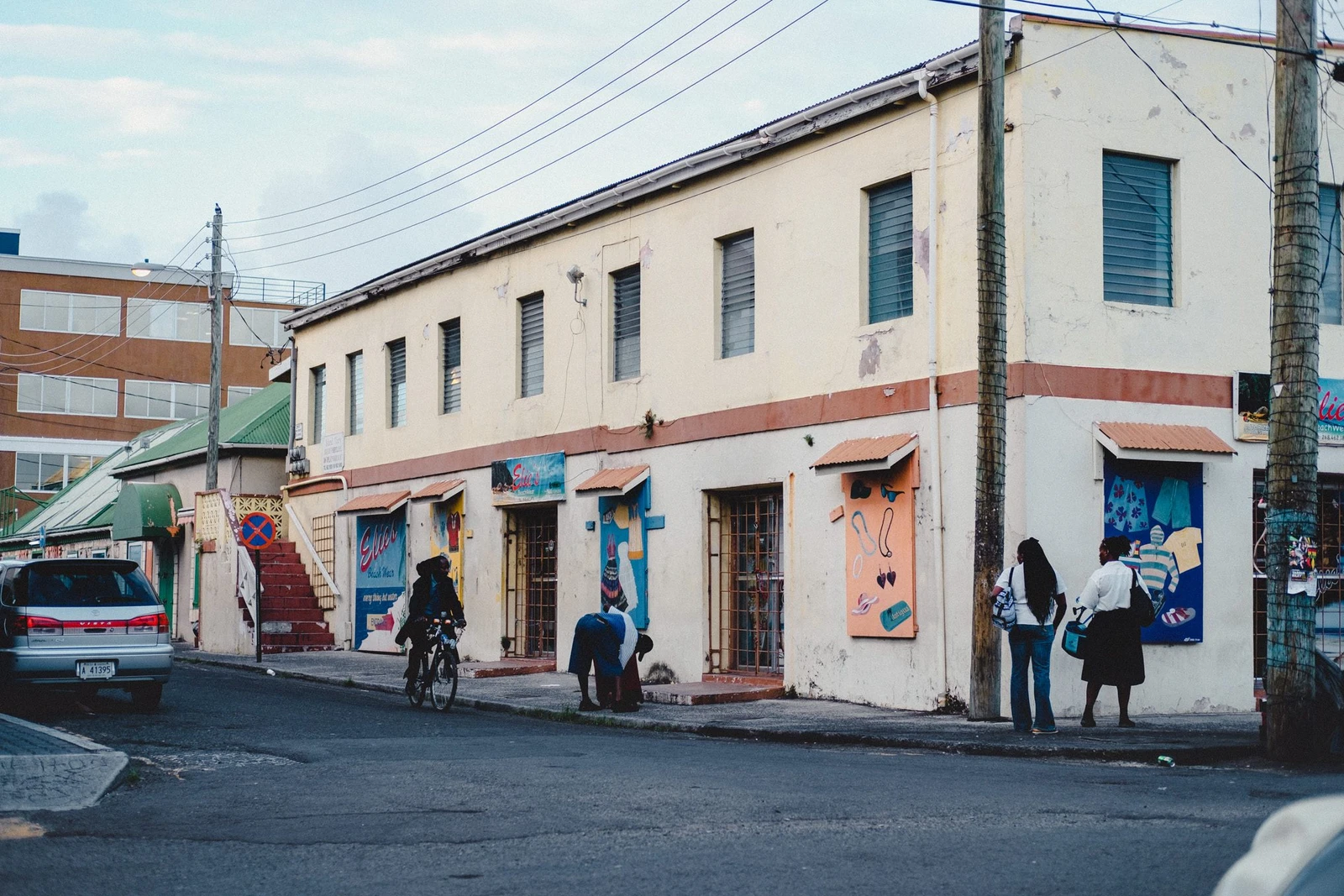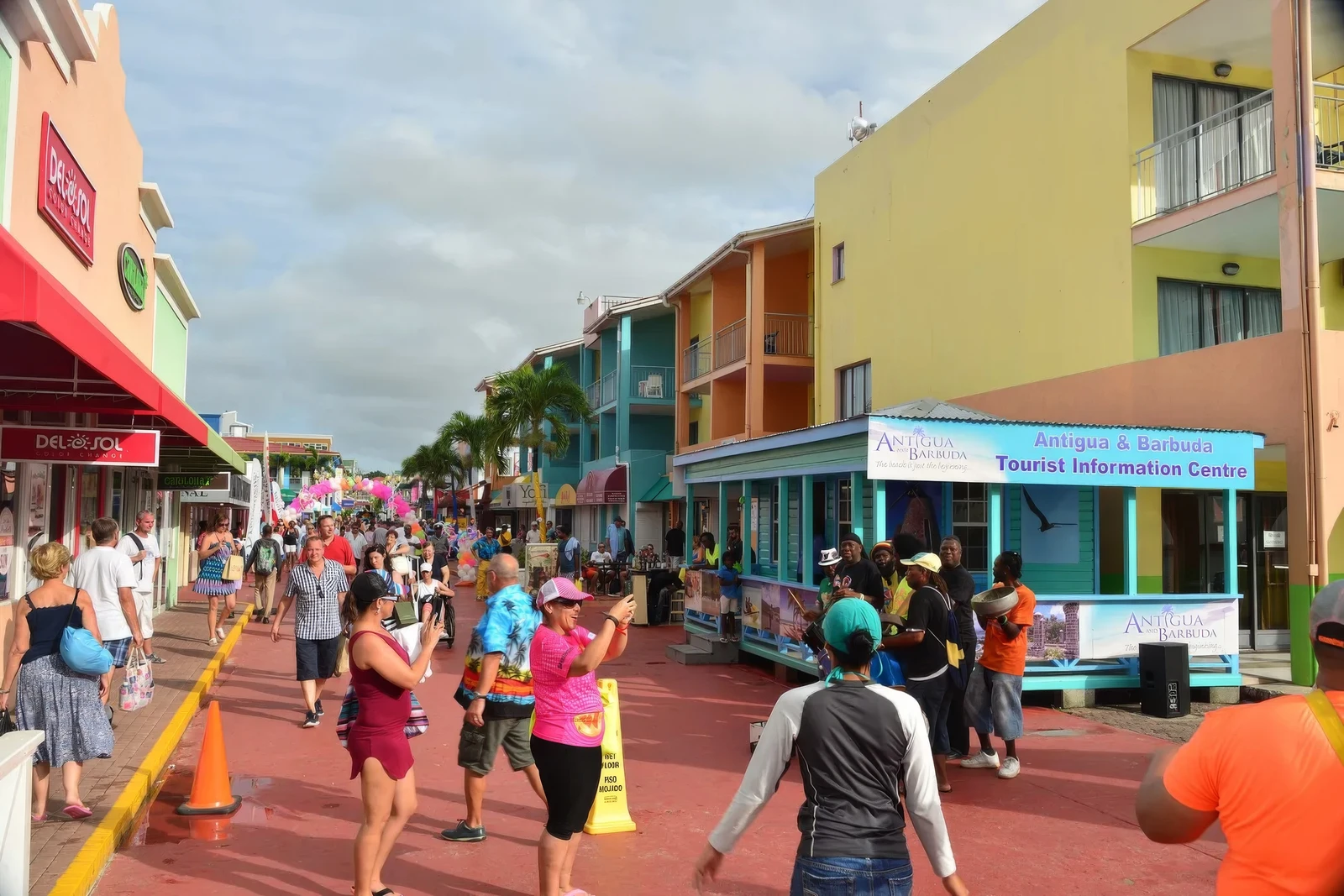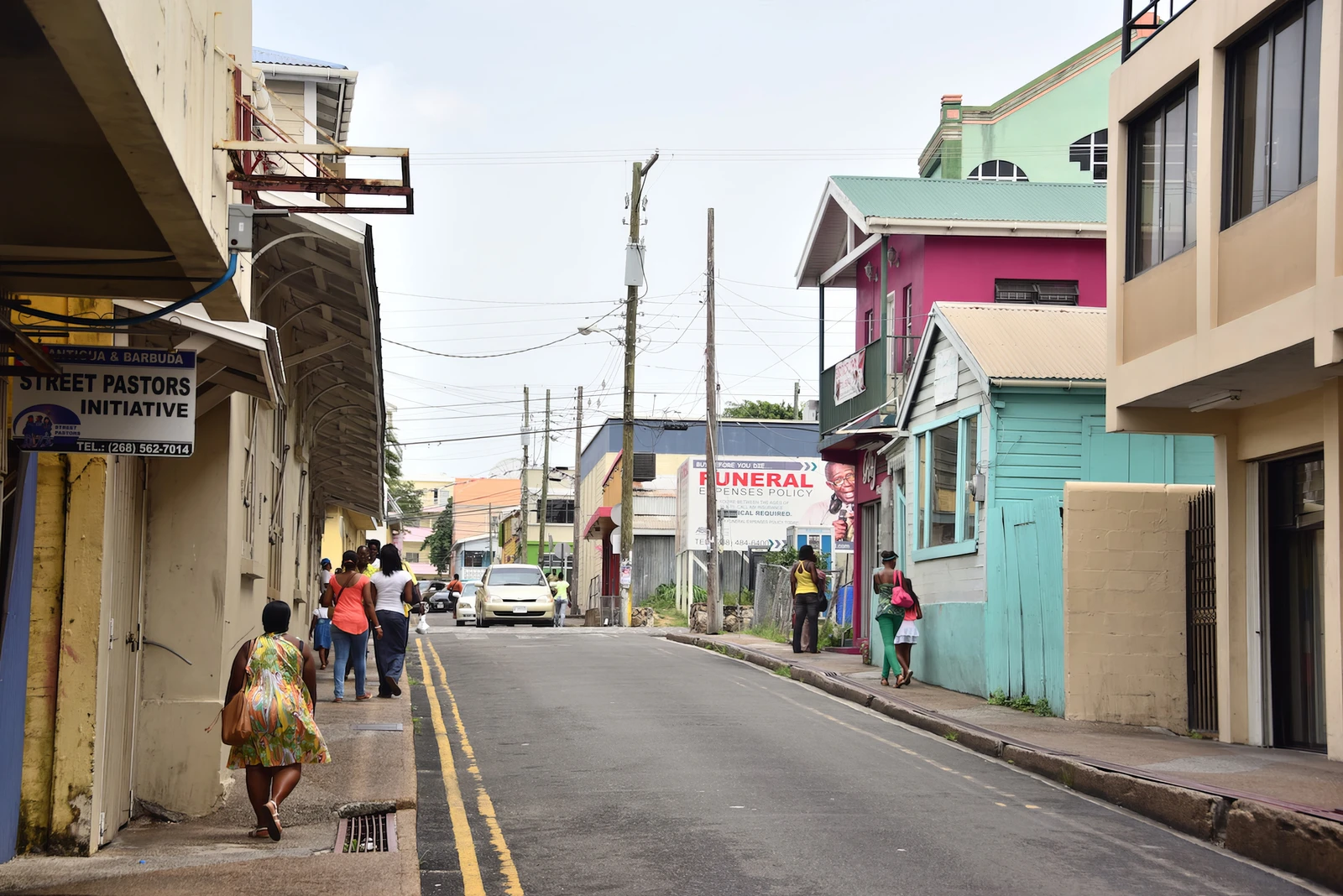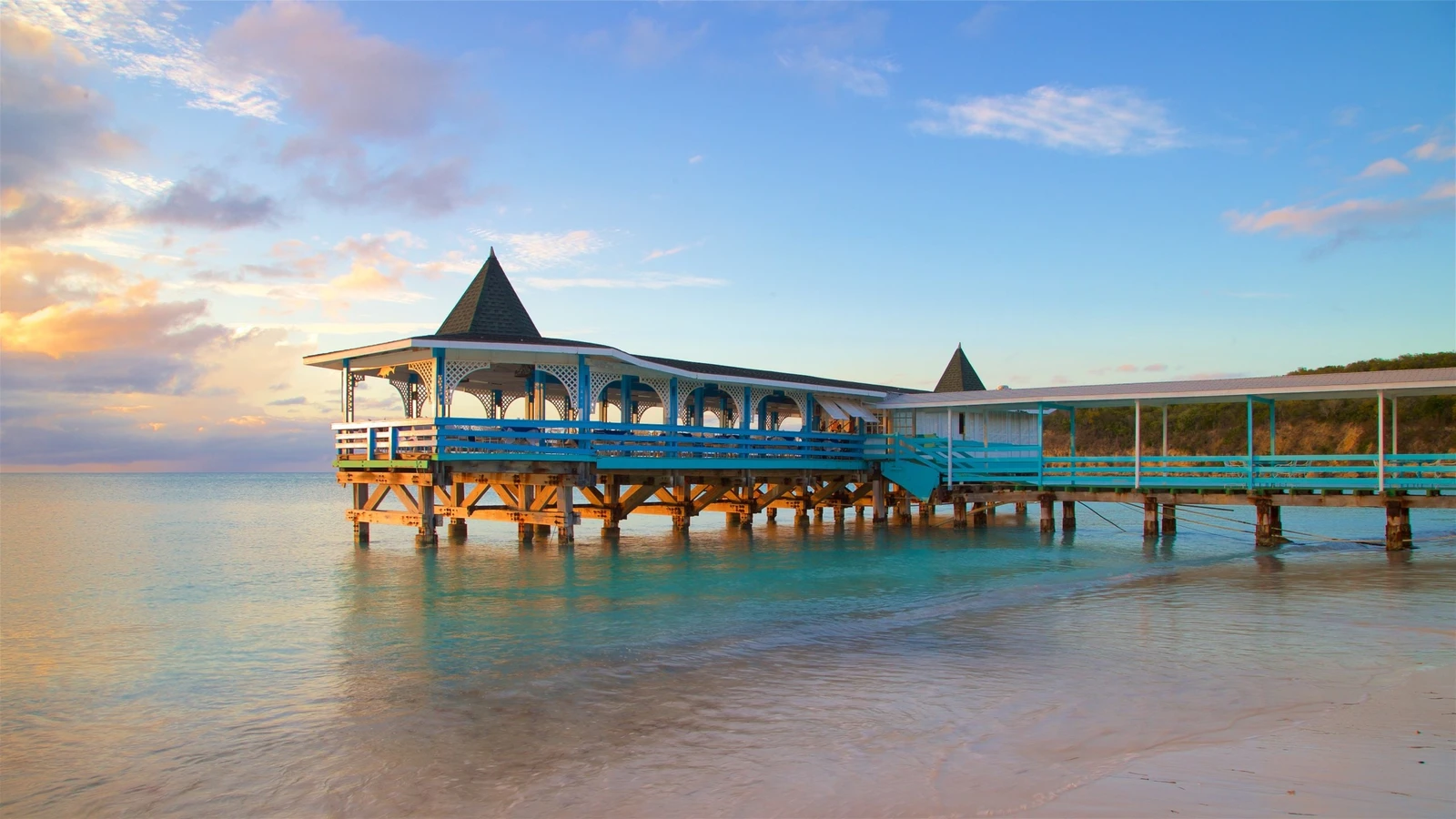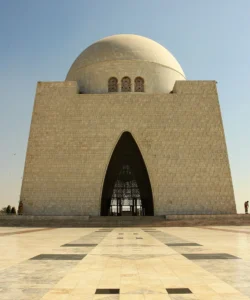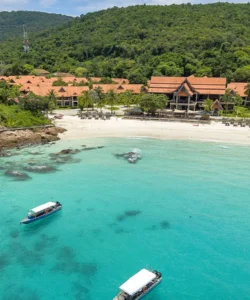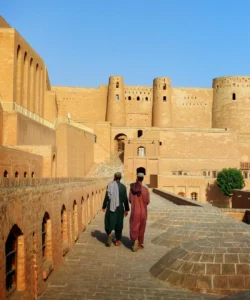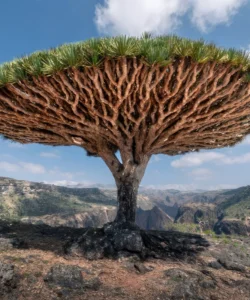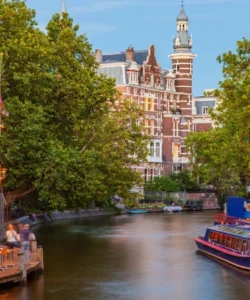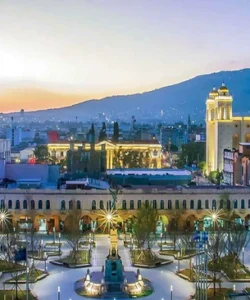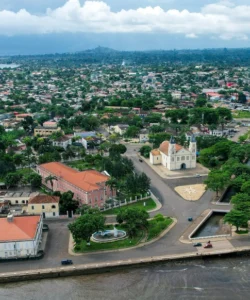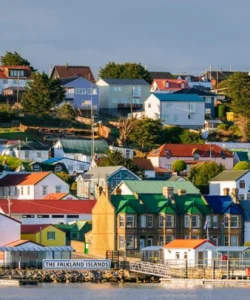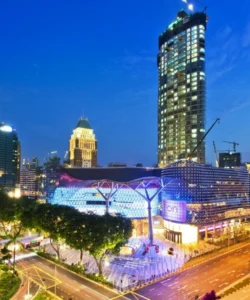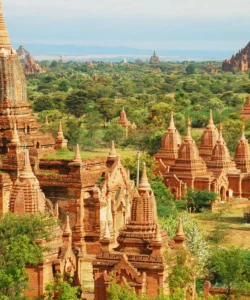Antigua and Barbuda is an independent twin-island nation located in the Eastern Caribbean. Renowned for its stunning coastline, the country boasts 365 beaches (one for every day of the year) of pristine white and pink sands, surrounded by calm, clear turquoise waters. It’s a popular destination for sailing, water sports, and beach lovers.
Listen to an introduction about Antigua and Barbuda
![]()
Area and Population:
Antigua has a land area of approximately 281 sq. km (108 sq. mi), and Barbuda is about 161 sq. km (62 sq. mi). The total land area for the nation is approximately 442 sq. km (171 sq. mi). As of July 2024, the estimated population is around 94,800 people.
Language:
The official language is English. Antiguan Creole and Barbudan Creole are also commonly spoken, which are English-based Creole dialects.
Currency:
The official currency is the Eastern Caribbean Dollar (XCD), which is pegged to the US Dollar at EC$2.70 to US$1.00. The United States Dollar (USD) is widely accepted throughout the islands.
Religion:
The predominant religion is Christianity, with various Protestant denominations (Anglican, Methodist, Moravian, Pentecostal, Seventh-Day Adventist) being the most common, alongside Roman Catholicism.
Capital:
The capital city of Antigua and Barbuda is St. John’s, located on Antigua. It is the largest city and the main port.
Major Cities/Towns:
Besides St. John’s, other notable towns on Antigua include All Saints and Liberta. The main settlement on Barbuda is Codrington.
Attractions:
Antigua and Barbuda’s attractions primarily highlight its maritime history, beautiful beaches, and natural beauty:
- Nelson’s Dockyard (Antigua): A UNESCO World Heritage site and a meticulously restored 18th-century British naval dockyard, it’s the only continuously working Georgian-era dockyard in the world. It’s a hub for sailing, history, and home to charming shops and restaurants.
- Shirley Heights Lookout (Antigua): Offers breathtaking panoramic views of Nelson’s Dockyard, English Harbour, and the southern coast. It’s famous for its lively Sunday evening parties with live reggae and steel band music, BBQ, and stunning sunset views.
- Half Moon Bay Beach (Antigua): A beautiful crescent-shaped beach on the Atlantic coast, known for its pink-tinged sand, turquoise waters, and a mix of calm and wavy sections.
- Devil’s Bridge National Park (Antigua): A natural limestone arch carved by the Atlantic waves over millions of years, offering dramatic ocean views and blowholes.
- Fig Tree Drive (Antigua): A scenic drive through the rainforest and charming villages, showcasing local life, fruit trees (including “figs” which are bananas), and local crafts.
- Ffryes Beach and Darkwood Beach (Antigua): Popular beaches on the west coast known for their calm waters, soft sand, and beach bars.
- Frigate Bird Sanctuary (Barbuda): Located in the Codrington Lagoon, this sanctuary is home to over 5,000 frigate birds, one of the largest colonies in the world. Accessible by boat tour, it’s a paradise for birdwatchers.
- Pink Sand Beach (Barbuda): Known for its unique pinkish hue, created by tiny fragments of coral and shells, offering a truly distinctive beach experience.
- Harmony Hall Art Gallery and Restaurant (Antigua): A gallery featuring local and regional art, set in a historic sugar mill ruin with beautiful views and a popular restaurant.
Natural Wonders:
The islands’ natural wonders are predominantly coastal and marine:
- Numerous Beaches: Over 365, showcasing variations in sand color and water conditions.
- Coral Reefs: Extensive reef systems surround the islands, supporting diverse marine life and making it ideal for snorkeling and diving.
- Limestone Formations: Such as Devil’s Bridge.
- Lush Interior (Antigua): While not as mountainous as some volcanic islands, Antigua has a green interior with rolling hills.
- Unique Flora and Fauna: Including the frigate bird colony on Barbuda.
Architecture:
Antiguan and Barbudan architecture reflects its strong British colonial heritage, adapted for the Caribbean climate, alongside contemporary resort designs.
- Georgian Naval Architecture (Nelson’s Dockyard): Outstanding examples of 18th-century British naval engineering and construction, with stone and brick buildings designed for functionality.
- Colonial Styles: In St. John’s, older buildings often feature timber construction with louvred windows and verandas, designed to catch breezes and provide shade. Pastel colors are common.
- Plantation Houses: While many are in ruins, some restored structures offer glimpses into the grander homes of the sugar era.
- Modern Resort Architecture: New hotels and villas typically feature open-plan designs, large windows, and use local materials where possible, blending into the natural landscape.
Roads:
Antigua has a relatively good network of paved roads, especially in the major tourist areas and around St. John’s. However, some roads, particularly in rural areas, can be narrow, winding, and may have potholes. Driving is on the left-hand side of the road. Barbuda’s roads are less developed, often unpaved. Taxis are widely available, and local buses operate on fixed routes. Ferries and small planes connect Antigua and Barbuda.
Hotels:
Antigua and Barbuda offer a wide range of accommodations, from large all-inclusive resorts to exclusive boutique hotels and private villas.
- Sandals Grande Antigua Resort & Spa: A popular all-inclusive resort on Dickenson Bay.
- Hermitage Bay: A luxurious, secluded boutique resort known for its tranquility and private villas.
- Curtain Bluff: An upscale, all-inclusive luxury resort with a long-standing reputation.
- Carlisle Bay: A chic, contemporary luxury resort on the south coast.
- Jumby Bay Island: An ultra-exclusive, all-inclusive private island resort off the coast of Antigua.
- The Inn at English Harbour: A charming boutique hotel with historical ties to Nelson’s Dockyard.
Restaurants:
The culinary scene in Antigua and Barbuda emphasizes fresh seafood, local produce, and a blend of African, Creole, and international influences.
- Sheer Rocks (Ffryes Beach, Antigua): A renowned cliffside restaurant with stunning sunset views, offering Mediterranean-inspired dishes.
- Catherine’s Café (Pigeon Point Beach, Antigua): A popular French-inspired beachfront restaurant known for its chic atmosphere.
- Papa Zouk Fish ‘n’ Rum (St. John’s, Antigua): Famous for its fresh seafood and extensive rum collection.
- Hemingway’s Caribbean Cafe (St. John’s, Antigua): A well-regarded spot for Caribbean and international cuisine in a historic setting.
- Dennis Cocktail Bar & Restaurant (Ffryes Beach, Antigua): Offers authentic Antiguan food right on the beach.
- Many resorts also feature multiple dining options, often including fine dining and international cuisine.
Cuisine:
Antiguan and Barbudan cuisine is flavorful, hearty, and relies on fresh local ingredients.
- Fungee and Pepperpot: Considered the national dish. Fungee is a cornmeal-based dumpling, often served with Pepperpot, a rich, savory stew made with various meats (usually beef, pork, or salted fish) and hearty vegetables like spinach, okra, and breadfruit.
- Saltfish: A staple, often prepared with seasoned vegetables.
- Ducana: A sweet dumpling made from grated sweet potato and coconut, seasoned with spices, wrapped in a banana leaf, and boiled.
- Black Pudding (Blood Sausage): A savory sausage made with seasoned rice and pig’s blood.
- Conch: Prepared in various ways, including stewed, fried fritters, or in salads.
- Fresh Seafood: Grilled fish (snapper, mahi-mahi), lobster, and shrimp are abundant.
- Goat Water: A spicy goat stew, popular for special occasions.
- Johnnycakes (Bakes): Fried dough served as a side.
- Tropical Fruits: Mangoes, pineapples, guavas, and soursop are common.
- Antigua Black Pineapple: A unique, sweet, and juicy pineapple variety.
- Rum: Locally produced rum is widely available and a popular ingredient in cocktails.











